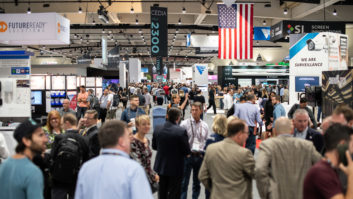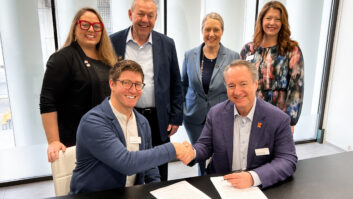There are three key areas to consider when you’re submitting an entry into the annual CEDIA Awards: a written essay, photographs, and proper documentation. Following the advice below can help your chances of making a great impression.
The Essay
Geoff Meads of Presto Web Design, a present-and-former CEDIA Awards judge, sums things up thusly: “Be brief and be to the point and highlight the most important parts of this project that actually made it different.
“What we do want to know is what was unique about the customer?” Meads continues. “You know; did they have any kind of special needs? Entertainment likes, aesthetic desires — or contradictory things, like they needed a massive screen for a small budget or a small budget in a big room for a theater, those kinds of things. How do you solve those issues?”
Of course, a big part of solid writing is good editing. “I see on too many entries the phrase, ‘The customer said that he wanted the system to be easy to use,’” says Meads. “Well, duh. If they’re not looking for a system that’s easy to use, they’ve come to the wrong people. Any of the systems put in by any of our integrators — particularly those at the awards level — should be usable in this way, just the same as any restaurant food should be edible. We don’t want to know the customer wanted that.”
There are online tools that can help you create clean copy, too. “There is a web copy editor called Hemingway. It’s free to use online or you can download and buy an app for Mac or PC. It’s a great way of streamlining text. It’s designed for people that write web copy where attention span is minimal. It highlights reading age, and we should have a reading age that is about 10th grade. It highlights sentences for overlong and overcomplicated, and it’s a great way of thinning out text to just stick to the point, and that’s what we really need entrants to do.”
Related: CEDIA Accepting Awards Entries for 2019 Competition
Photography
Joel Silver of the Imaging Science Foundation, who will again be part of CEDIA’s judging panel in 2019, tells us, “First of all, can I tell how the equipment was integrated? How easy it is for me to walk into that project and take it over? How well are things laid out? How well can it be maintained? And that doesn’t require artistic photography. Do we have a good-looking room where the equipment is nicely hidden from a design standpoint?”
“You have to be neat, accurate, artful, and simple,” Silver says.
But make sure that the judges see that brilliant cable management you’ve painstakingly installed. Silver says, “I can’t begin to tell you how aggravating it is when we’re provided pictures of the front of the equipment rack and none of the rear. It looks like it should be wonderful, but there is no picture of the rear.”
Meads concurs: “As judges we have a rather difficult situation where if we don’t see it, we have to assume it wasn’t done. If we don’t see the back of the rack picture, we assume it’s not labeled, it’s not wired correctly. If you want us to realize that this was done beautifully, appropriately, and according to your best practices, then let’s see some evidence of that.”
Find inspiration in last year’s winners.
Documentation
One of the keys to winning a CEDIA Award? Proper documentation — and that means including calibration reports.
Every judge bemoans the lack of calibration documents, but it’s especially painful for Silver, founder of the Imaging Science Foundation. “If I don’t have those reports, I don’t know what the white balance is like. I don’t know how bright the screen is. I can’t tell if it’s got the right cables going to the projector.”
But when all the documentation is in order, when those sheets of schematics and details are so user-friendly that they allow for anyone to come in and understand what they’re looking at, CEDIA’s judges will take note.
It’s one of the reasons “Best Documentation” carries its own CEDIA trophy. “So as far as I’m concerned, if you’re CEDIA member, every install should be an award-winning install for documentation,” says Silver. “You should give your clients value. They should be able to sell that with the house with value. The next engineer, the next home owner should look at that and understand where every wire goes, what they got, what they did. And we are delighted with some of the submissions for the racks we’re seeing around the world. These are systems you could walk in and take over in a heartbeat.”
The deadline for entries for Home Technology professional in the 2019 CEDIA Awards is March 18, 2019. For more info, see cedia.net/awards.
Header Photo: The Edge Cottage won the 2018 CEDIA Award for Best Integrated Home Level II (EMEA) and the 2018 CEDIA Award for Best Integrated Home, Global. The integrators are Intuitive Homes and Ultamation (both U.K.).






